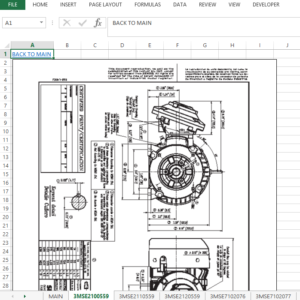How often should electric motors be lubricated? How can you be sure you’re using the right amount? Here’s your primer.
How often your facility’s electric motors should be lubricated—and how much lubricant they should receive—depends on several factors. When you’re considering electric motor lubrication frequency and quantity, take into account the following:
- Is the lubricant grease or oil?
- Is the bearing type sleeve, ball, or roller?
- If it is a ball bearing, is the enclosure open, shielded, or sealed?
Let’s delve into these considerations further by breaking them down into the following categories:
- Grease lubrication frequency and quantity for ball and roller (rolling element) bearings.
- Oil lubrication frequency and level (relates to quantity) for ball and roller bearings.
- Oil lubrication frequency and level (relates to quantity) for sleeve bearings.
Grease lubrication of sleeve bearings is extremely rare, and sealed bearings cannot be relubricated, so those topics will not be addressed in this article.
